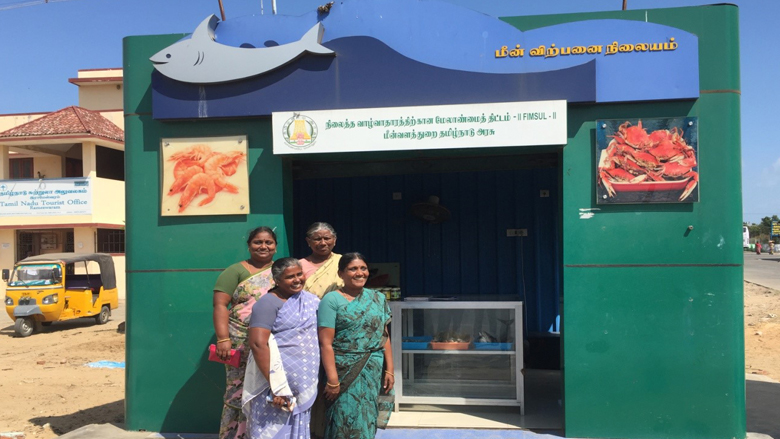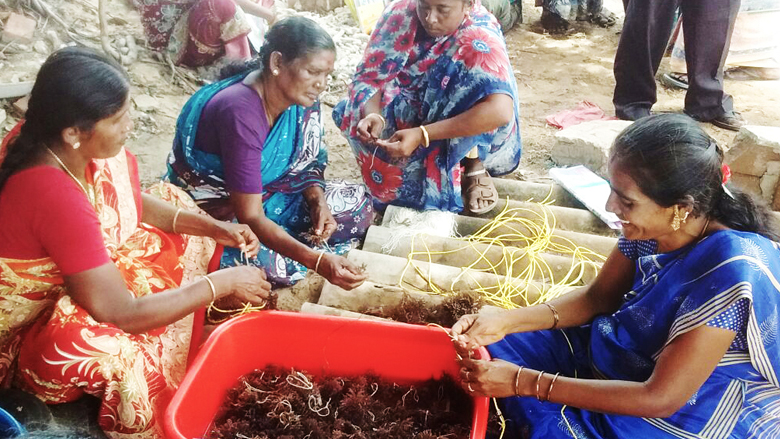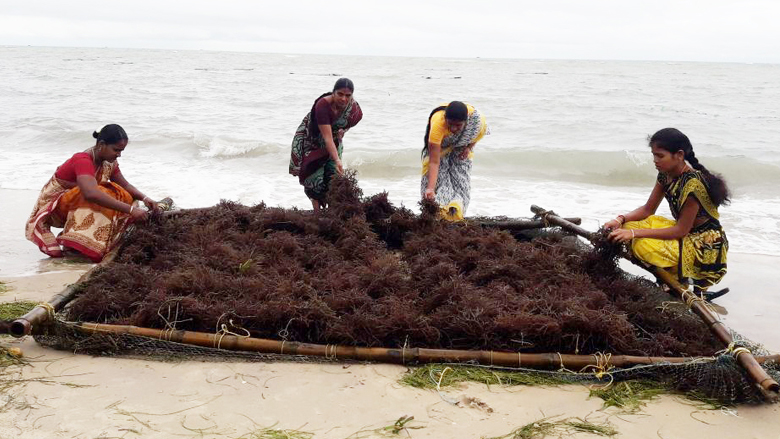It's a hot day in Marthandam, a town in Tamil Nadu's Kanyakumari district near the Kerala border, just a few kilometres from the coast. As evening sets in and the sun embarks on its final descent towards the western horizon, a dusty street near Marthandam junction comes alive. Men, women and children swarm out to kirana stores (grocery shops), vegetable vendors, fruit sellers and various other commercial establishments.
Amidst all the shops on the street, one particular establishment stands out, even to the casual eye. With its storefront painted in bright blue and green and a big cut-out of a merry fish hanging over the entrance, Marthandam's fish kiosk is unmissable.
A gaggle of people stand at the kiosk's counter. Inside, three women – Celine Mary, Mary Shanti and Chandra – move about busily. It's 6 pm and peak hour for the kiosk. Business is brisk.
“Tastes like home food,” smiles a customer, when Celine Mary hands him a packet of fish curry and rice.
As the man pays up and leaves, another customer steps forward. He points to a bottle of fish pickle at the counter and asks if he can get 100 of those before the end of the week.
“I am going to Dubai next week. This pickle is very popular with the Indian community over there,” he explains.
Another customer waits as Mary Shanti packs 500 grams of seer fish, while another asks if the 'fish fry', a preparation popular with customers in the area, is ready yet.
The women would stay busy for the next three hours.
A new beginning for those who have lost everything
The Marthandam fish kiosk is one of the 12 fish kiosks supported by the Tamil Nadu Department of Fisheries (TNDoF) across coastal Tamil Nadu as part of the World Bank-supported Coastal Disaster Risk Reduction Project (CDRRP). The initiative is directed at widows from fishing families who have lost their husbands at sea in isolated incidents or during disasters such as the 2004 Tsunami that claimed the lives of more than 8,000 people in Tamil Nadu and severely affected the livelihoods of thousands of coastal households.
Under the initiative, four or five women come together to run a kiosk. The Project provides them with a furnished space, shelves, and equipment such as freezers. Trainings are organized for the women in various technical areas like preserving fish and other perishables, maintaining hygiene, and preparing value-added products such as pickles and masalas (spices). The women have also been linked to an entrepreneurship training program conducted by the Entrepreneurship Development Institute (EDI).



